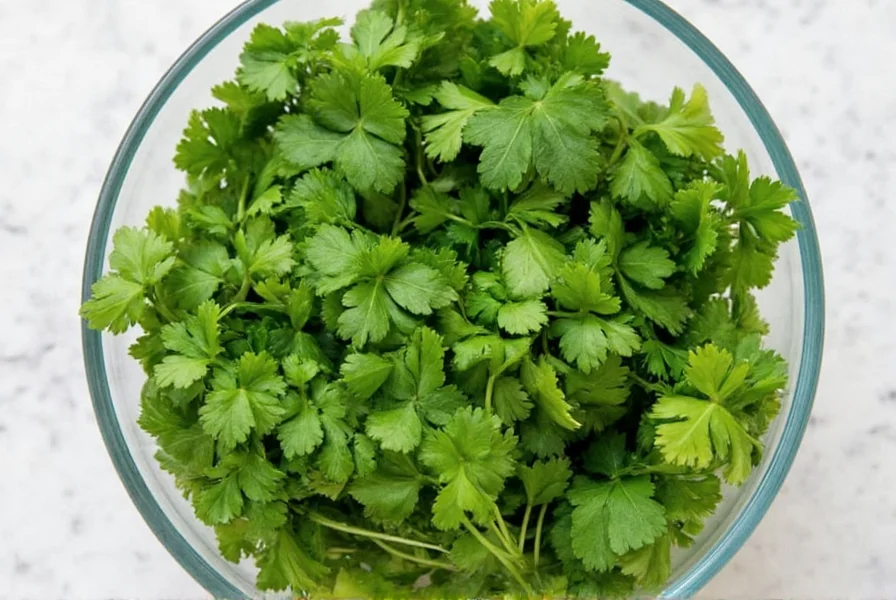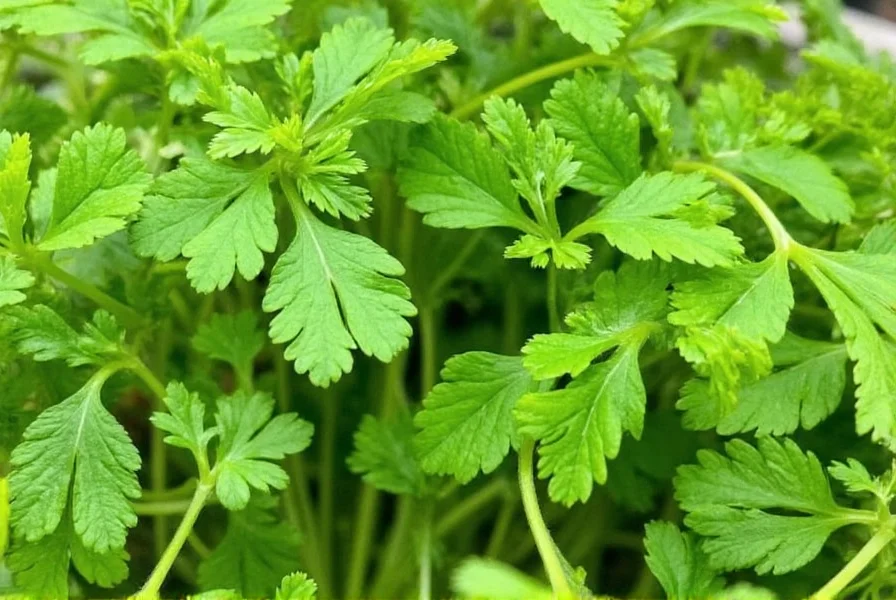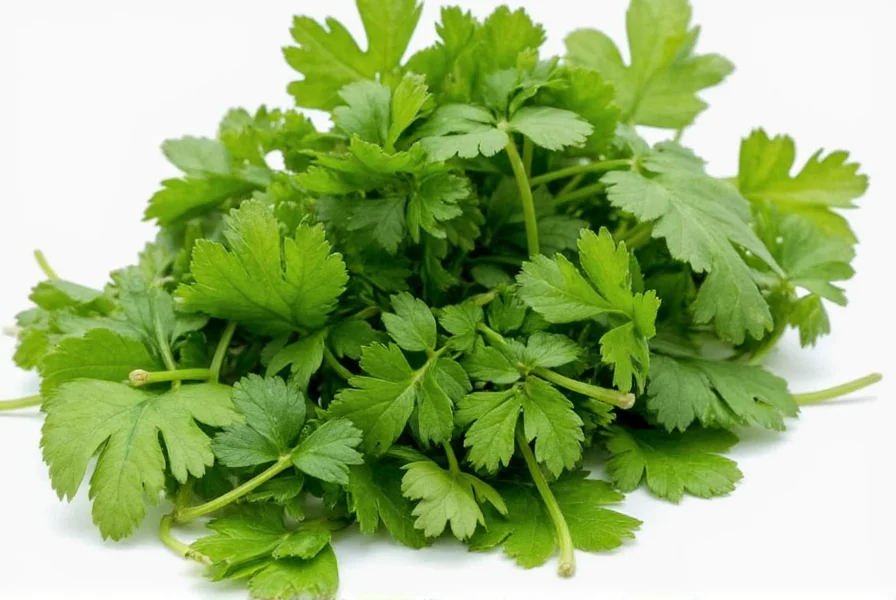Coriander, also known as cilantro, is a delicate herb that loses freshness quickly at room temperature. Freezing provides an excellent preservation method when you've purchased more than you can use immediately. Unlike many herbs, coriander responds well to freezing when done correctly, allowing you to enjoy its distinctive flavor long after purchase.
Why Proper Freezing Technique Matters for Coriander
Coriander contains high moisture content and volatile oils that give it its characteristic flavor. Improper freezing can lead to freezer burn, texture degradation, and flavor loss. The key to successful coriander preservation lies in minimizing ice crystal formation and protecting the herb's essential oils during the freezing process.

Step-by-Step Guide to Freezing Coriander
Preparation: Washing and Drying
Begin with fresh, vibrant coriander. Gently wash the bunch under cool running water to remove any dirt or debris. Avoid soaking, which can accelerate spoilage. After washing, thoroughly dry the coriander using one of these methods:
- Salad spinner followed by patting dry with clean kitchen towels
- Spread on paper towels and allow to air dry for 15-20 minutes
- Use a clean cotton tea towel to gently roll and absorb moisture
Complete drying is crucial—any remaining moisture will form ice crystals that damage the herb's cell structure during freezing.
Freezing Methods Compared
| Method | Best For | Storage Duration | Flavor Retention |
|---|---|---|---|
| Ice Cube Tray (Water) | Soups, stews, curries | 4-6 months | Good |
| Ice Cube Tray (Oil) | Sauces, marinades | 5-6 months | Excellent |
| Dry Freezing | Quick cooking applications | 2-3 months | Fair |
| Vacuum Sealing | Long-term storage | 6-8 months | Very Good |
Detailed Freezing Techniques
Ice Cube Tray Method with Water
This approach works well for recipes where small amounts of liquid won't affect the final dish. Finely chop the completely dry coriander leaves and stems. Pack the chopped herb into ice cube trays, filling each compartment about two-thirds full. Cover with cold water and freeze until solid. Once frozen, transfer the cubes to labeled freezer bags, removing as much air as possible before sealing.
Ice Cube Tray Method with Oil
For superior flavor preservation, especially for Mediterranean and Asian cuisines, use this oil-based technique. Chop the dried coriander and place in ice cube trays. Cover with olive oil, avocado oil, or another neutral oil. Freeze solid, then transfer to airtight containers. The oil prevents oxidation and creates ready-to-use flavor bombs for sautéing.
Dry Freezing Technique
When you need a quicker method, spread thoroughly dried whole or chopped coriander in a single layer on a parchment-lined baking sheet. Freeze for 2-3 hours until solid, then transfer to freezer bags. This method works best for immediate use within a few months.
Storage Guidelines for Frozen Coriander
Regardless of your chosen freezing method, proper storage ensures maximum shelf life. Use high-quality freezer bags or airtight containers designed for freezer use. Squeeze out excess air to prevent freezer burn. Label each package with the date and method used. Store at 0°F (-18°C) or below for best results.
Properly frozen coriander maintains good flavor for 4-6 months. While technically safe beyond this timeframe, flavor and color gradually diminish. For best culinary results, use frozen coriander within this optimal window.
Using Frozen Coriander in Cooking
Unlike some herbs, frozen coriander doesn't require thawing before use in most applications. Add frozen cubes directly to hot dishes like soups, stews, and curries during the last few minutes of cooking. For cold dishes or garnishes, thaw frozen coriander in the refrigerator for 30 minutes before use.
The water-frozen method works best for liquid-based dishes, while oil-frozen coriander excels in sautéed dishes and sauces. Remember that frozen coriander won't have the same crisp texture as fresh, making it ideal for cooked applications rather than fresh salsas or salads.
Troubleshooting Common Freezing Issues
Discoloration: Slight darkening is normal but excessive browning indicates air exposure. Ensure proper sealing and consider the oil method for better color retention.
Mushy texture: This typically results from insufficient drying before freezing. Always ensure coriander is completely dry to the touch before freezing.
Flavor loss: Freezer burn or extended storage causes diminished flavor. Use within 6 months and maintain consistent freezer temperature.

Frequently Asked Questions
Can you freeze whole coriander stems and leaves together?
Yes, you can freeze whole coriander stems and leaves together. The stems actually contain more flavor than the leaves and work well frozen. Simply wash, dry thoroughly, and freeze using your preferred method. Chopping before freezing makes the herb more versatile for cooking applications.
How long does frozen coriander last in the freezer?
Properly frozen coriander maintains good flavor for 4-6 months when stored at 0°F (-18°C) or below. The oil-frozen method extends usability to 6-8 months. While frozen coriander remains safe indefinitely, flavor and color gradually diminish after the 6-month mark.
Should I blanch coriander before freezing?
No, blanching isn't recommended for coriander. Unlike hardy herbs like rosemary, coriander's delicate structure and volatile oils break down with heat exposure. Blanching would destroy the fresh flavor you're trying to preserve. Simply washing, drying thoroughly, and freezing works best for maintaining coriander's distinctive taste.
Can frozen coriander be used in fresh applications like salsa?
Frozen coriander works best in cooked dishes rather than fresh applications. The freezing process changes the texture, making it unsuitable for raw preparations like fresh salsa where crisp texture matters. For cooked salsas, soups, stews, and curries, frozen coriander performs excellently and maintains good flavor when properly frozen.
What's the best oil to use when freezing coriander?
Olive oil works well for Mediterranean dishes, while avocado oil or grapeseed oil provides a more neutral flavor suitable for various cuisines. For Asian recipes, consider freezing coriander in sesame oil for added flavor dimension. The oil creates a protective barrier against freezer burn and delivers ready-to-use flavor portions for cooking.











 浙公网安备
33010002000092号
浙公网安备
33010002000092号 浙B2-20120091-4
浙B2-20120091-4